Ēlektōr means beaming sun, and is the ancient Greek word for amber. This is where our contemporary word for electricity originates, as in ancient times, amber’s ability to bear static electricity was recognised.
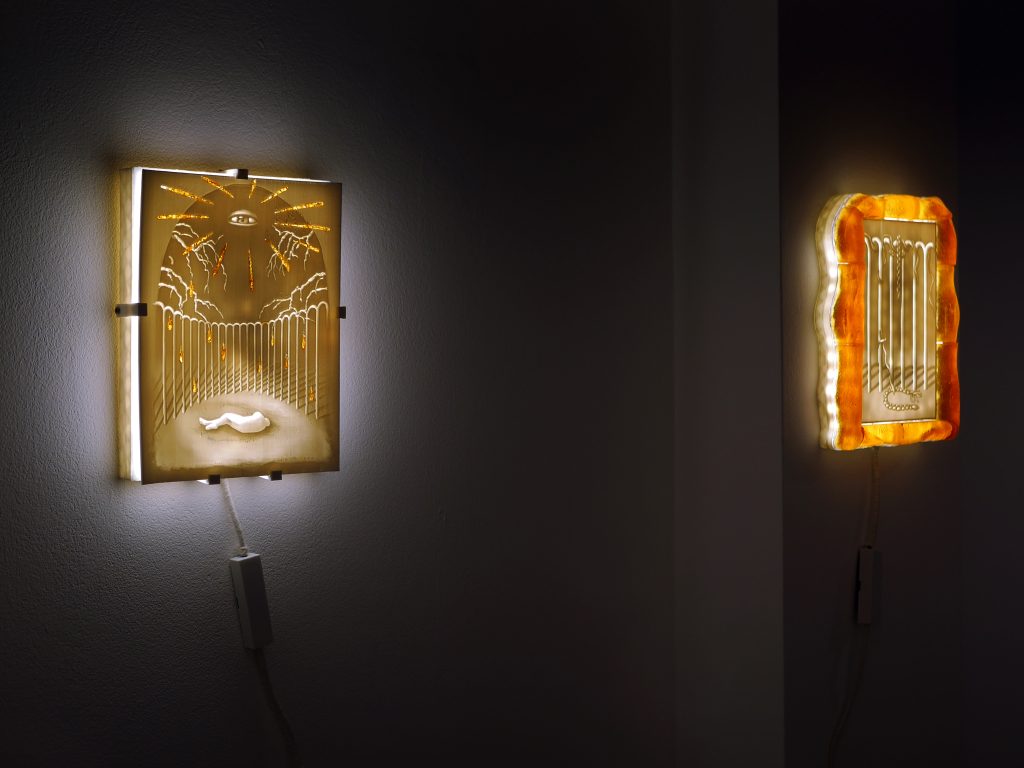
Ēlektōr is an ongoing series experimenting with technologies, materials and mythological narratives of the past and present. These 3D-printed lithophanes create a bridge between premodern mythology and contemporary technology. The use of lithophanes is informed by Media Archaeology and attempts to bring this rarely used medium into the realm of Contemporary Art. The biodegradable PLA filament is combined with moulded natural pine resin, alluding to the ancient Greek symbology of amber, a material that had mythological significance. Backlit with inbuilt LED lights, the artworks evoke an alluring glow reminiscent of either a burning fire or a digital screen.
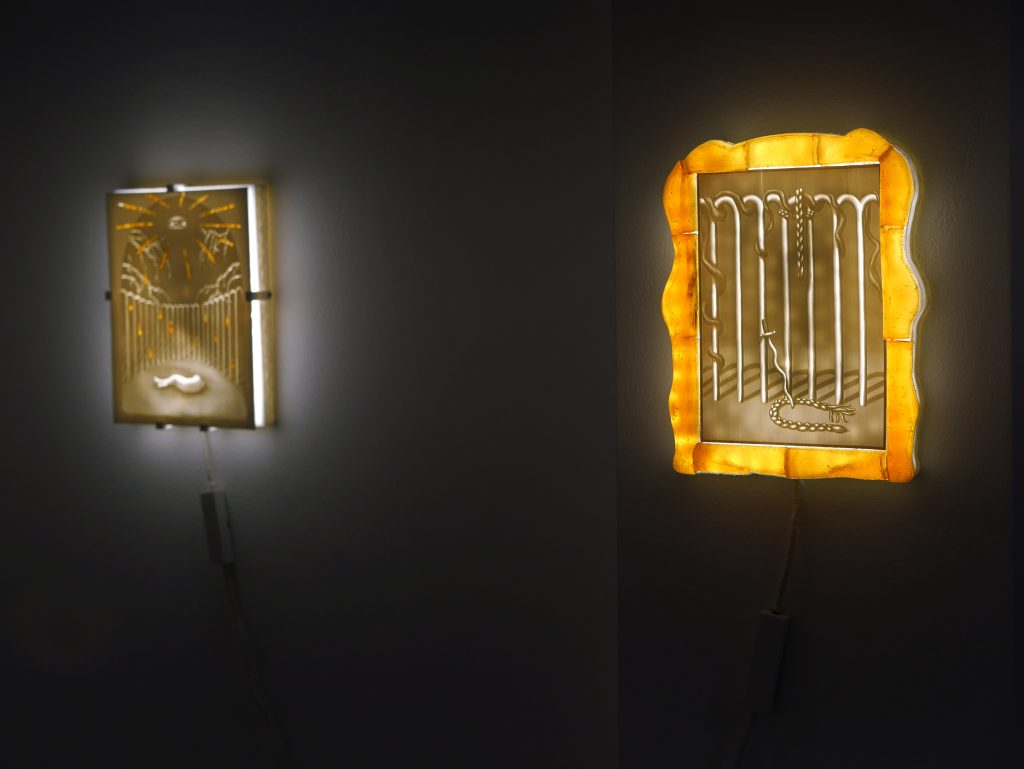

3D printed lithophane, PLA filament, pine resin, LED lights
24 x 18,5 x 4 cm
V. – VI. Eve and Phaethon
The pieces explore the story of the Exile as a story of female desire for knowledge and defiance, and of punishment and discipline, drawing parallels with the mythological story of the Greek half-god Phaethon. He, against all warnings, tried to drive his Father Helios’ horse-drawn chariot once around the Earth, but the horses broke loose, scorching the centre of the Earth and freezing its corners. After his father decided to strike his son dead with a bolt of lightning, the sisters of Phaethon turned into poplar trees and mourned him with tears of amber.

3D printed lithophane, PLA filament, pine resin, LED lights
25,2 x 19,7 x 4,6 cm
Our modern term for “electricity” comes from the ancient Greek name for amber, the unfossilised form of which appears as resin in electrically powered luminous artworks as a symbol of inner strength and mourning.


Too Brave and Defence was exhibited at:
– 2024: sanga ni wati // every time of space – group show at K11 Labor, Budapest, Hungary
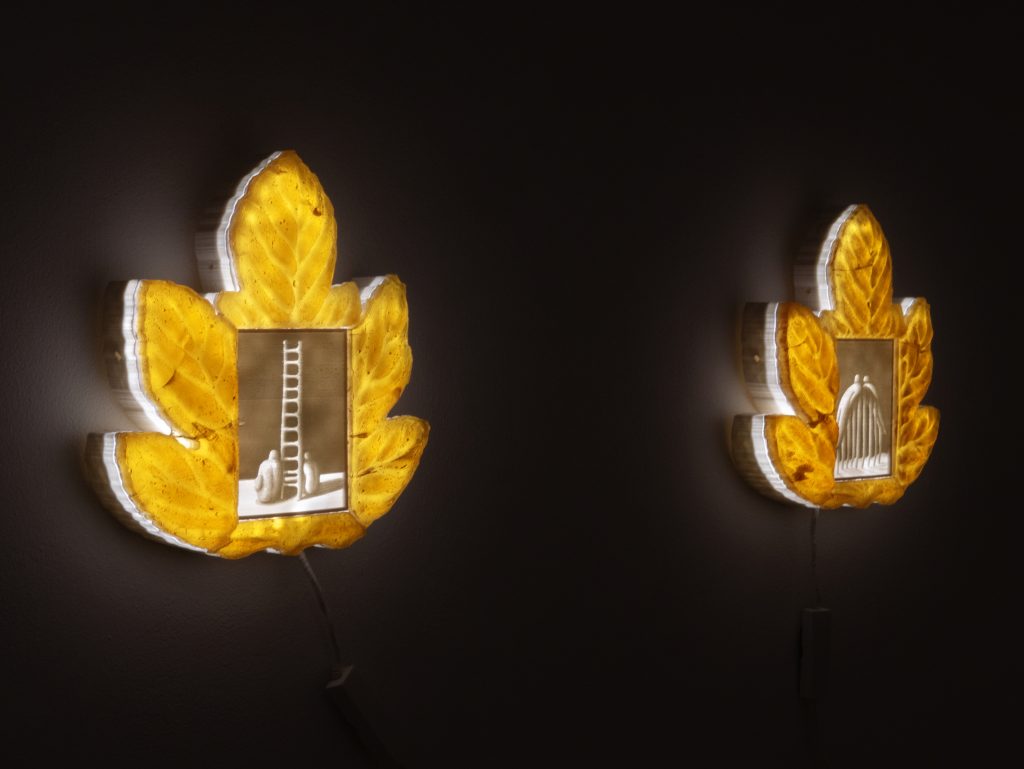
III.-IV. The Garden of Eden
Exile as a prehistory of punishment, expulsion, migration, and homelessness is critically examined in two works, “The Gate of the Garden” and “The Ladder to Eden. The consequences of the expulsion are exile, suffering and the search for a home, as well as a sense of abandonment and regression. After the expulsion, God sent guards to the edge of the Garden of Eden to keep Adam and Eve and their descendants out of the Garden. Here began the division of the earth into open and closed, desirable and undesirable areas. The two works bring this prehistory into the present, while their technical solutions combine the natural and the artificial, the timeless and the modern. They consist of 3D printed lithophanes based on digital drawings, with custom moulded frames 3D printed and then cast in pine resin. Thanks to the lighting behind the framed images, the works glow like embers.
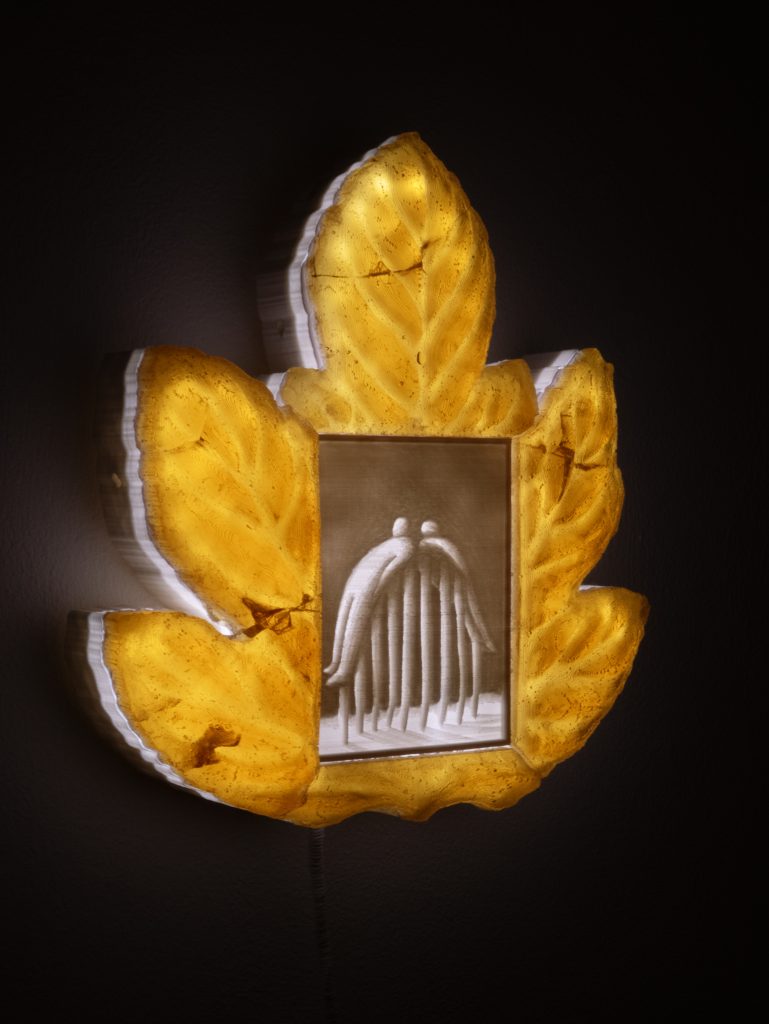
3D printed lithophane, PLA filament, pine resin, LED lights
24 x 26 x 6 cm
These two works utilise media prehistory, employing technical solutions that blend the natural and the artificial, the timeless and the modern. They are comprised of 3D printed PLA lithophanes based on digital drawings, with custom-moulded frames 3D printed and subsequently cast in pine resin. Illuminated from behind, the framed images emit a glowing ember-like effect, providing a unique visual experience. The technique of creating lithophanes originates from ancient Chinese porcelain traditions that were brought to and utilized in Europe from the beginning of the 19th century. The distinctive feature of lithophanes is that the image is formed by light shining through the alternating thickness of the artwork, originally made from porcelain. Therefore, where the image is light-toned, the material is thin and where it is dark, the material is thick. This technique can be considered one of the earliest precursors to contemporary digital backlit pixel displays, where images are formed by light shining towards the viewer, as opposed to light bouncing off a surface such as a printed page or a painted canvas.

3D printed lithophane, PLA filament, pine resin, LED lights
24 x 26 x 6 cm
The choice of casting the frames in pine resin holds a symbolic resonance, echoing the revered ancient Greek significance of amber. In ancient times, amber, often associated with the tears of the gods, held mystical and sacred connotations. Its golden hues were perceived as a link between the earthly and the divine. The connection between amber and electricity, dating back to ancient Greece, further enriches the symbolism and significance of this work made and lit with electricity. The word “electricity” itself finds its roots in the Greek word “ēlektōr” and “ēlektron”, which originally referred to amber. The static charge generated when amber is rubbed was a phenomenon observed by early natural philosophers. By incorporating resin into the frames of “The Gate of the Garden” and “The Ladder to Eden,” the artist pays homage to this ancient symbolism and the intriguing historical link between amber and the very concept of electricity. The luminous quality of the resin, much like amber, imparts a timeless and ethereal quality to the works, inviting viewers to contemplate the intersections of mythology and science.
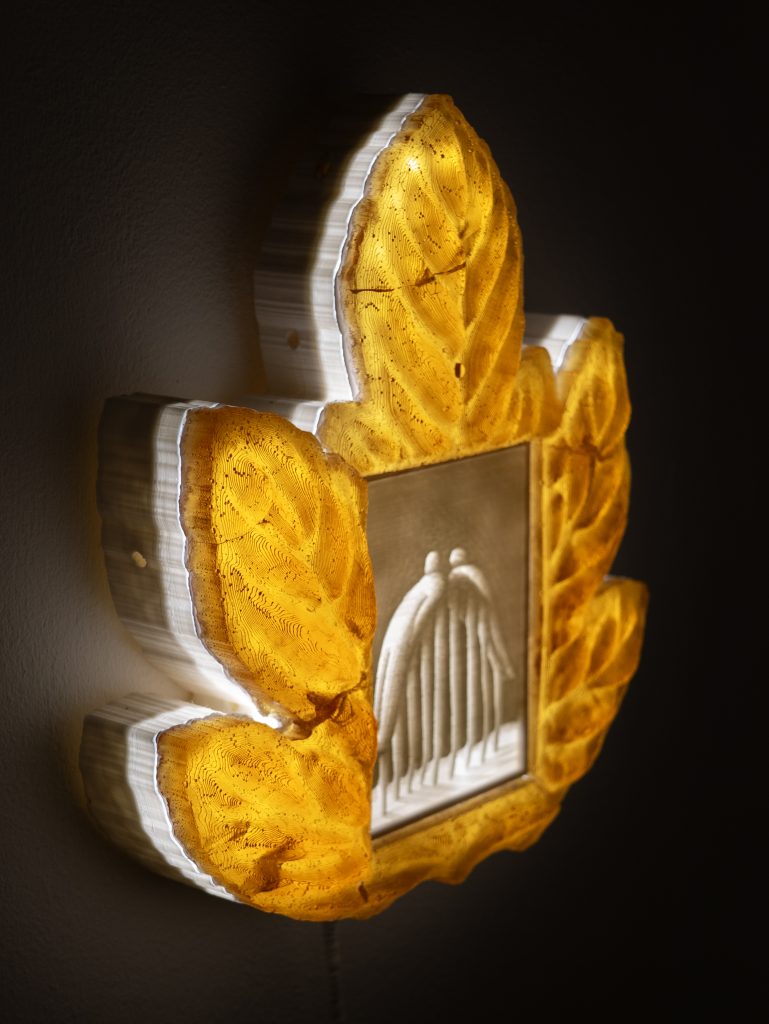

Exhibited:
– 2024: sanga ni wati // every time of space – group show at K11 Labor, Budapest, Hungary
– 2023: Patron 2023 – group show at FKSE – Young Artists’ Association, Budapest, Hungary
– 2023: sanga ni wati // every time of space – group show at the Skurc Group, Budapest, Hungary
I.-II. Folktales
The artworks highlight the underlying submission and lack of agency of female figures in Hungarian folk tales, unpicking the magical veil of narratives that idealise suppression, reaffirming the feudalistic society in which these tales emerged.
Exhibited at the “They Lived Forever After” group exhibition at Nyolcésfél, Budapest Hungary.
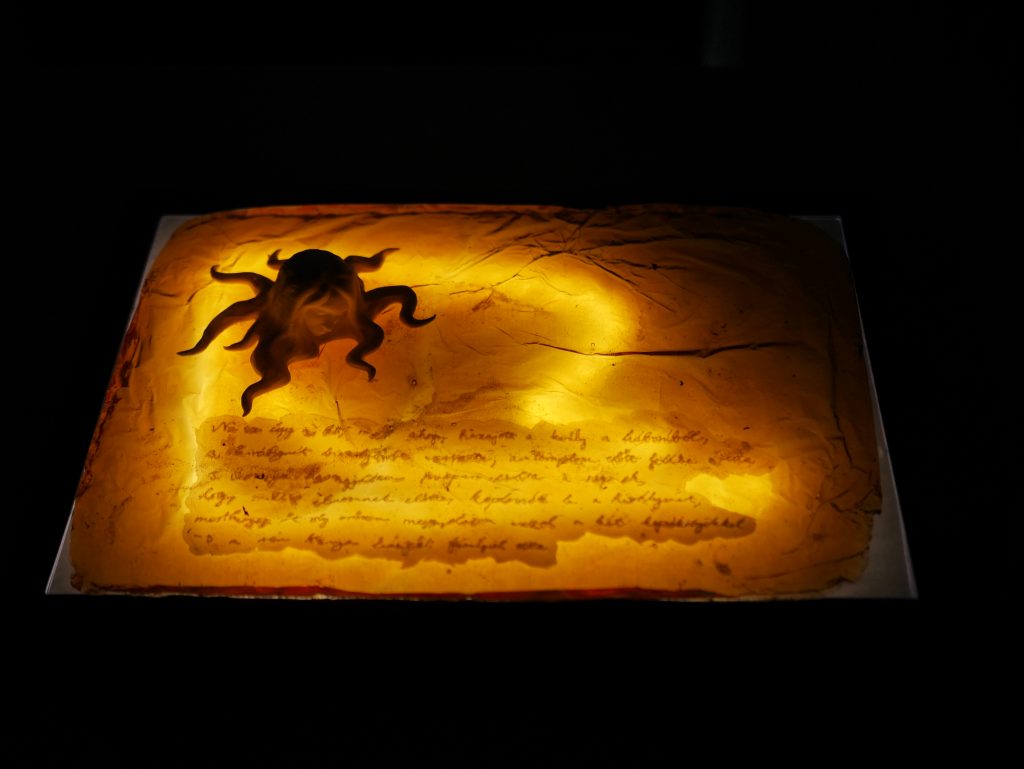
(2023)
3D printed PLA filament, pine resin, LED lights, wood
38,5 x 29 x 6 cm
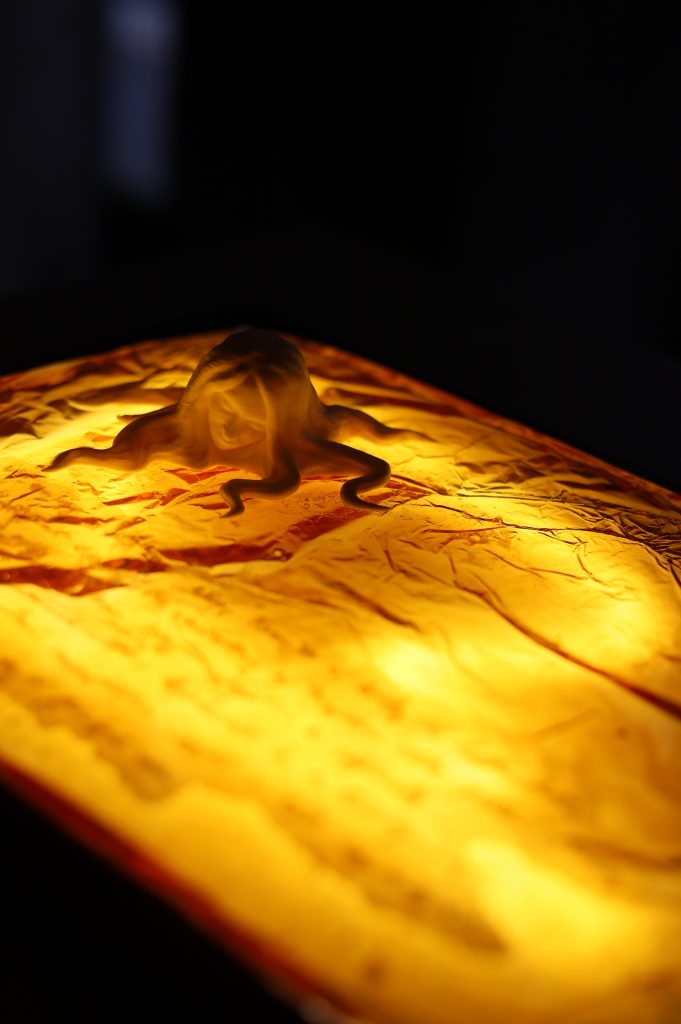
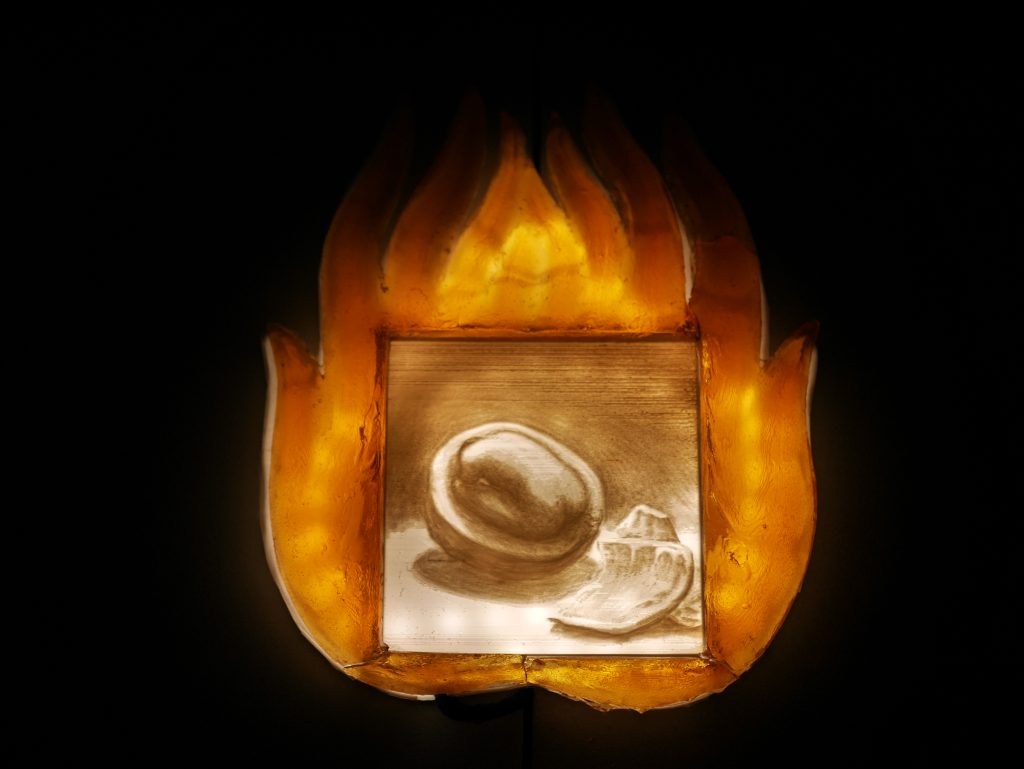
3D printed lithophane, PLA filament, pine resin, LED lights
26 x 22 x 4 cm
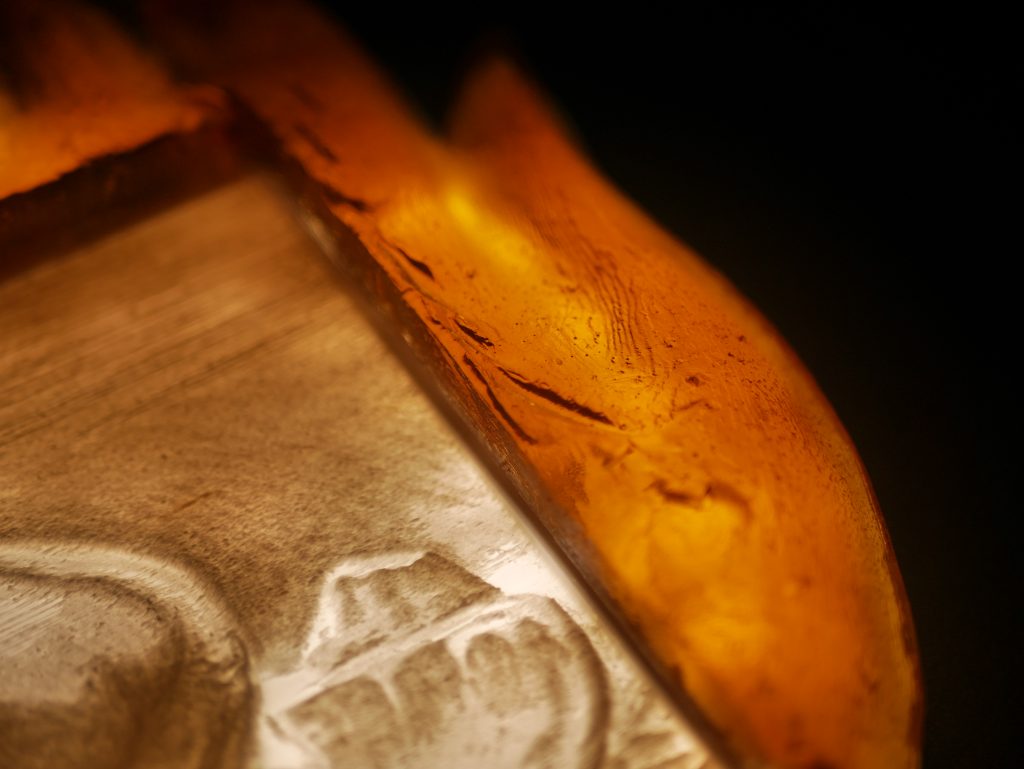
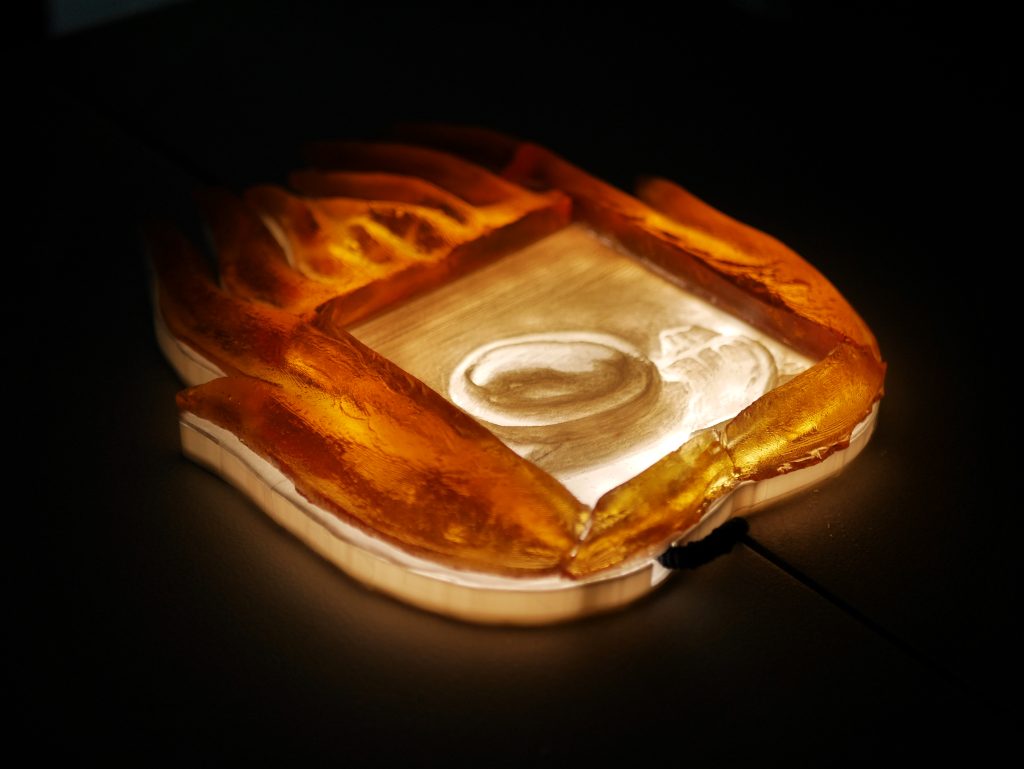
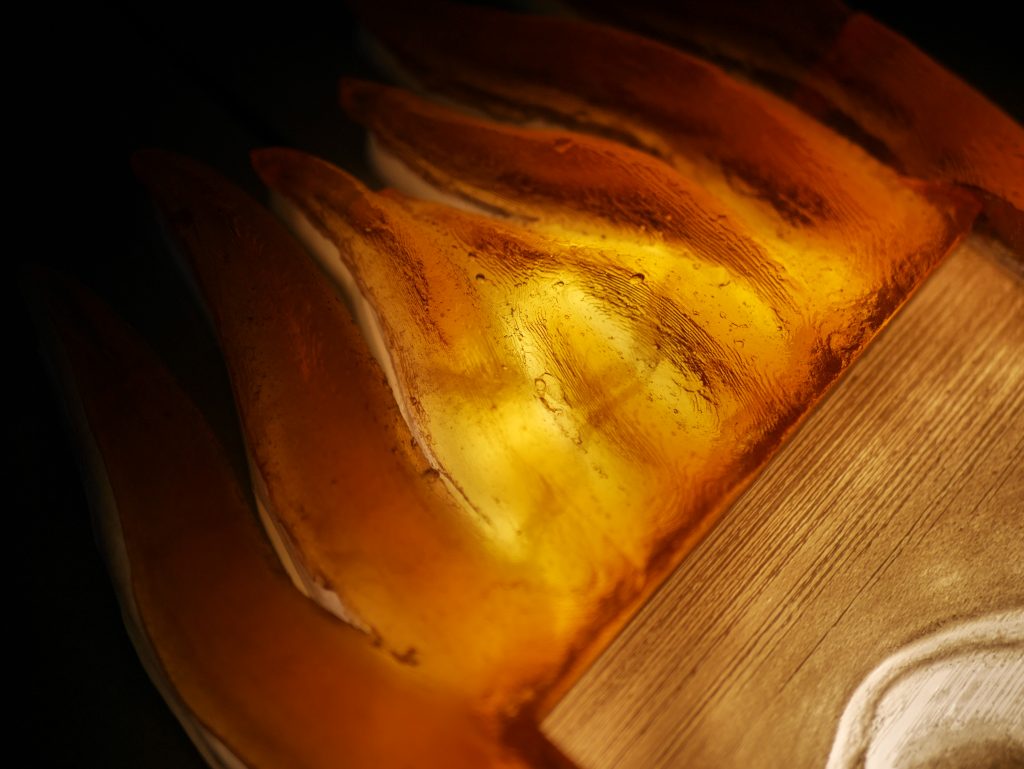
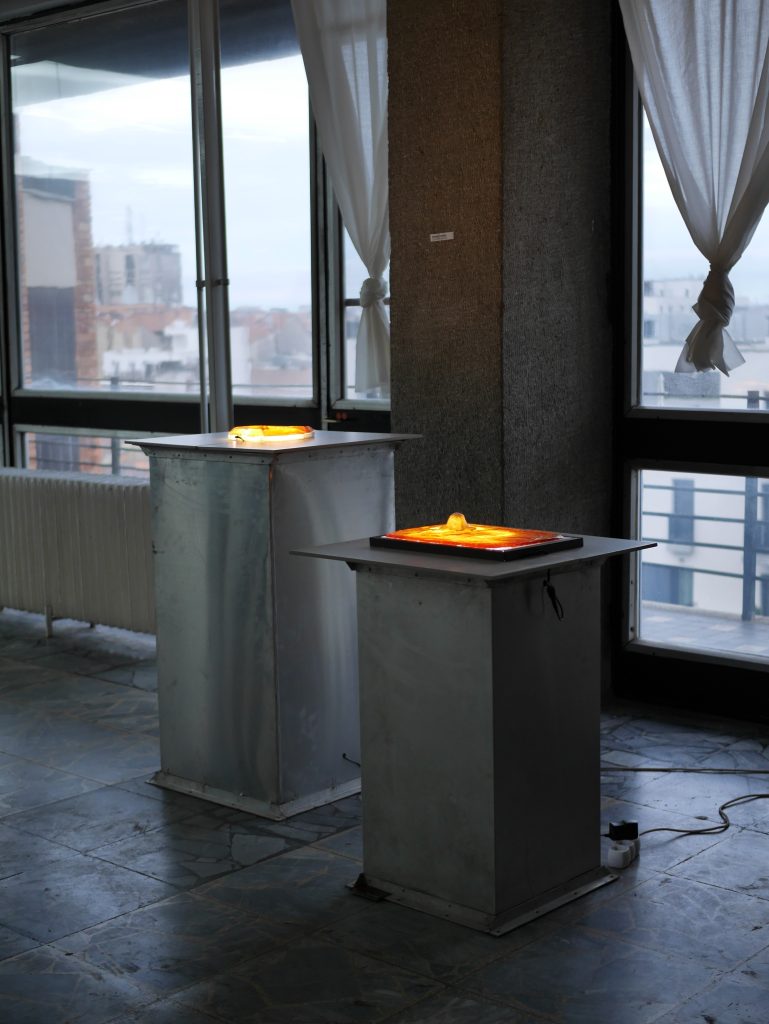
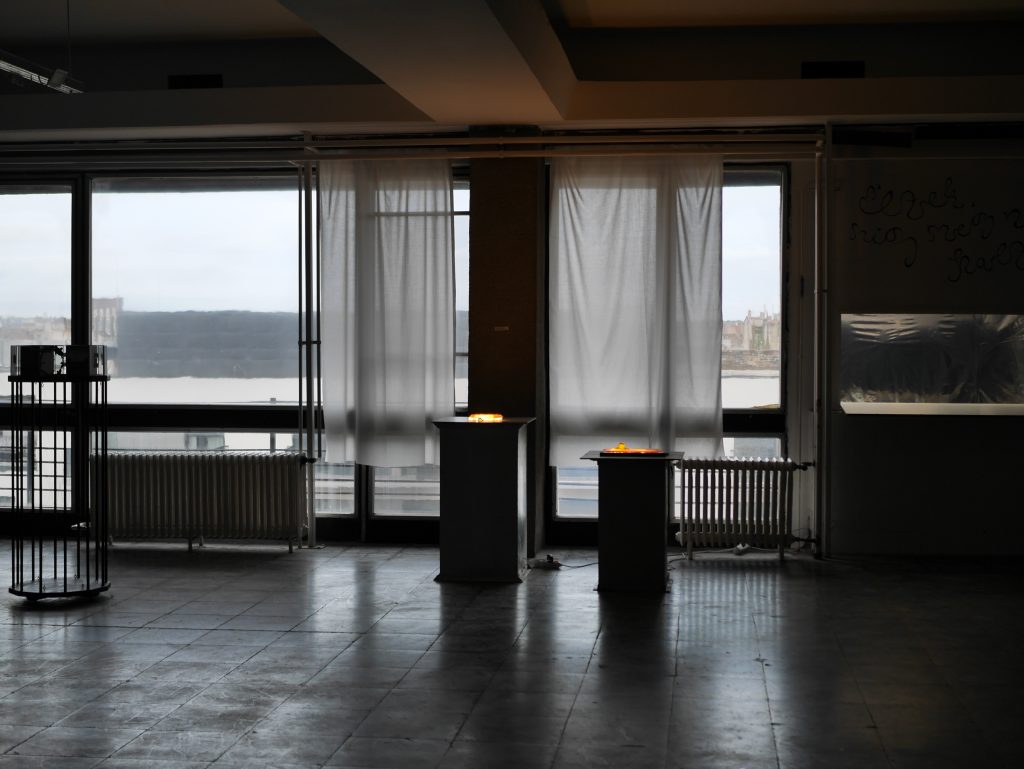
Photographs taken by Péter Tamás Sági and Martha Kicsiny.
